The area was swarming with stocky guys in Duck Hunter camouflage.
A guidon flapping in a wet sea breeze indicated the compound contained elements of the Blue Dragons.
Personally, I was interested in a couple of other things on that trip.
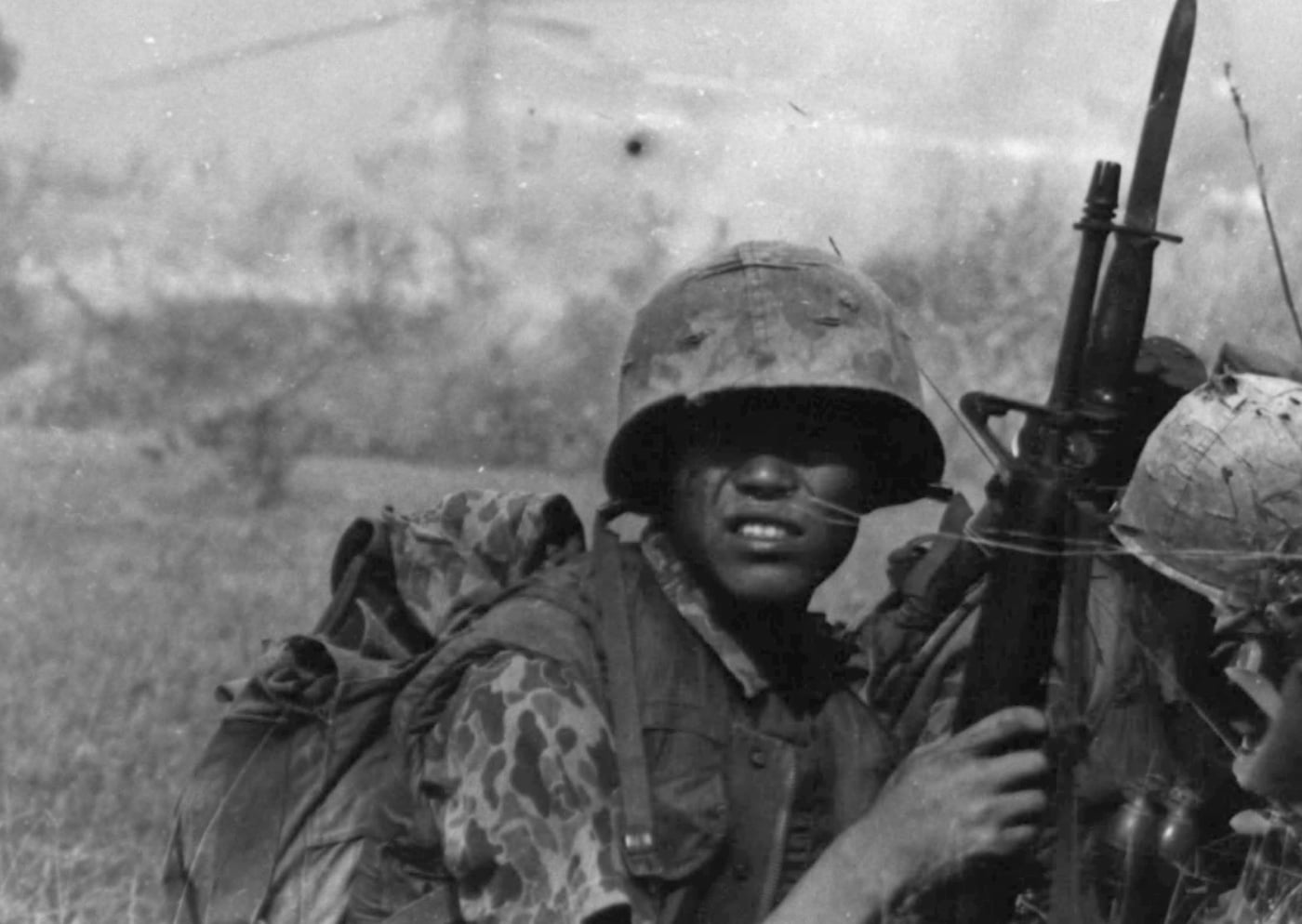
In July, 1967, a Republic of Korea (ROK) Marine crouches behind a hedgerow and awaits the order to move out during a sweep and clear mission west of Binh Son. Image: Cpl. Cowan/U.S.M.C.
), had recently been issued the M16 rifle.
Were they having the same sort of problems with it that were being reported by American counterparts?
[The South Koreans were one of several nations supporting South Vietnam in the Vietnam War.

South Korean Marines of the Blue Dragons, offload supplies near Hoi An, Vietnam. The ROK Marines were supplied by Marine Medium Helicopter Squadron 265. Image: Lance Cpl. R. F. Nelson/U.S.M.C.
ReadAmericas Allies in the Vietnam Warfor the full story.]
Who had the effective methodology here?
Was it the old American iron fist in a velvet glove SOP in counter-insurgency warfare?

During a September 1967 operation, ROK Marines capture Viet Cong militants who were hiding in a cave. Image: Sgt. Ryan/USMC
Or did the Koreans have it right with kick-ass and never mind taking names approach?
What was clear immediately was that these Korean Marines were a physical bunch.
They were aggressive in everything they did, including swift corrections for malcontents or miscreants.
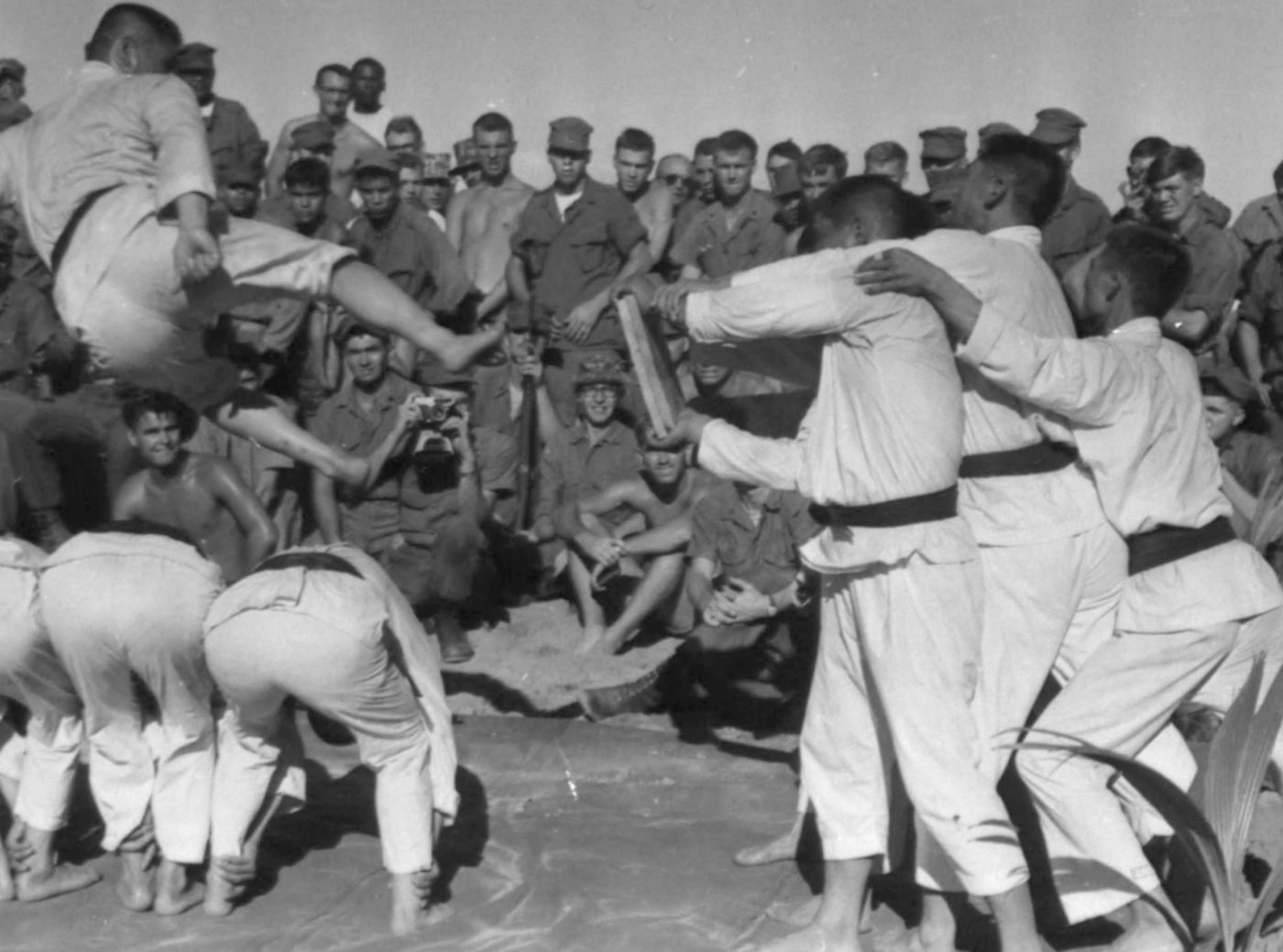
A member of a Korean Marine Brigade demonstrates his proficiency in martial arts before a crowd of U.S. Marines at the Chu Lai. Image: Lance Cpl. Cowen/U.S.M.C.
Bad move against an aggressive outfit like the Blue Dragons who believed in close combat and overwhelming firepower.
Intimidation by reputation is a thing in some cases.
The ANGLICO guys said this was typical.
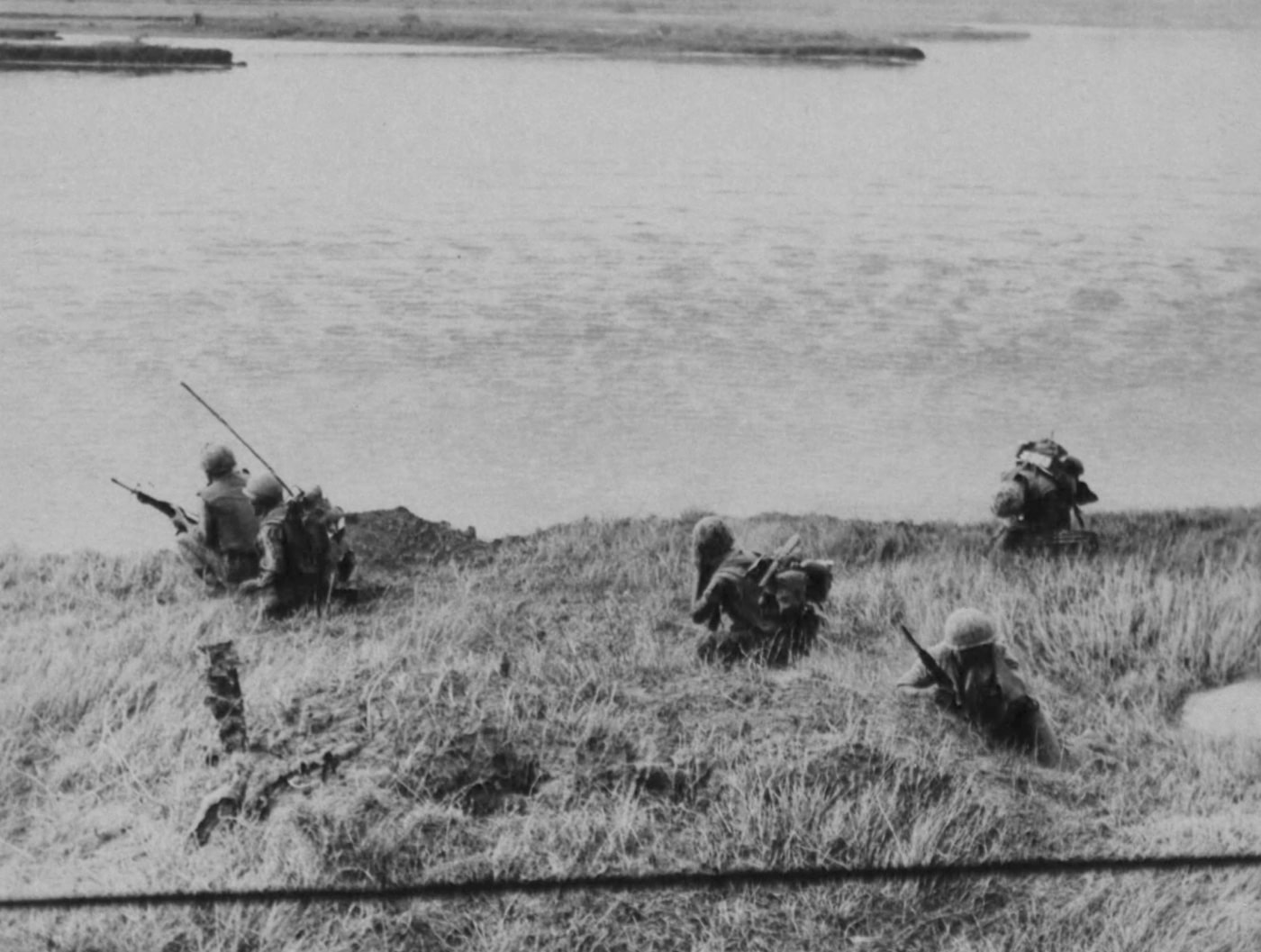
Republic of Korea Marines set up a hasty defense perimeter on Barrier Island, 12 miles southeast of Da Nang. They were inserted by helicopters to search for the enemy. Image: Cpl. C. R. White/U.S.M.C.
The Korean Marines were nothing if not thorough in exploiting a battle site.
They usually returned from a field operation with a sizeable stock of captured weapons and ammo.
And all of them seemed to have some sort of family horror story relating to North Korean oppression.
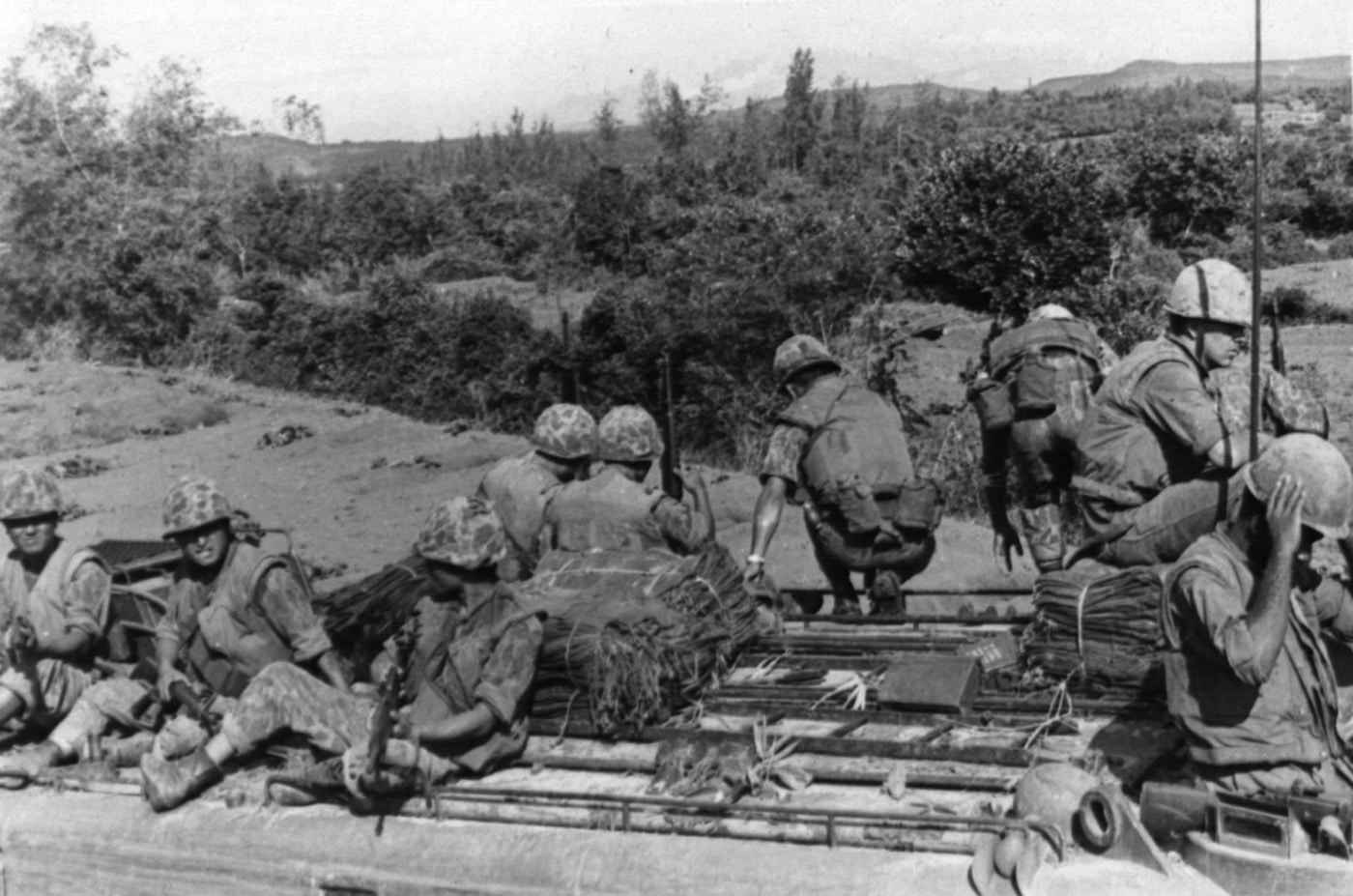
ROK Marines ride atop anAMTRACto Hill 26 during Operation Dragon Fire in September 1967. Image: Sgt. Ryan/U.S.M.C.
That said, we did note that certain platoons took precautions.
Like their American Marine counterparts, the ROK Marines generally didnt use the issue sling.
That kept it handy for failures to extract if a cartridge casing stuck in the chamber.
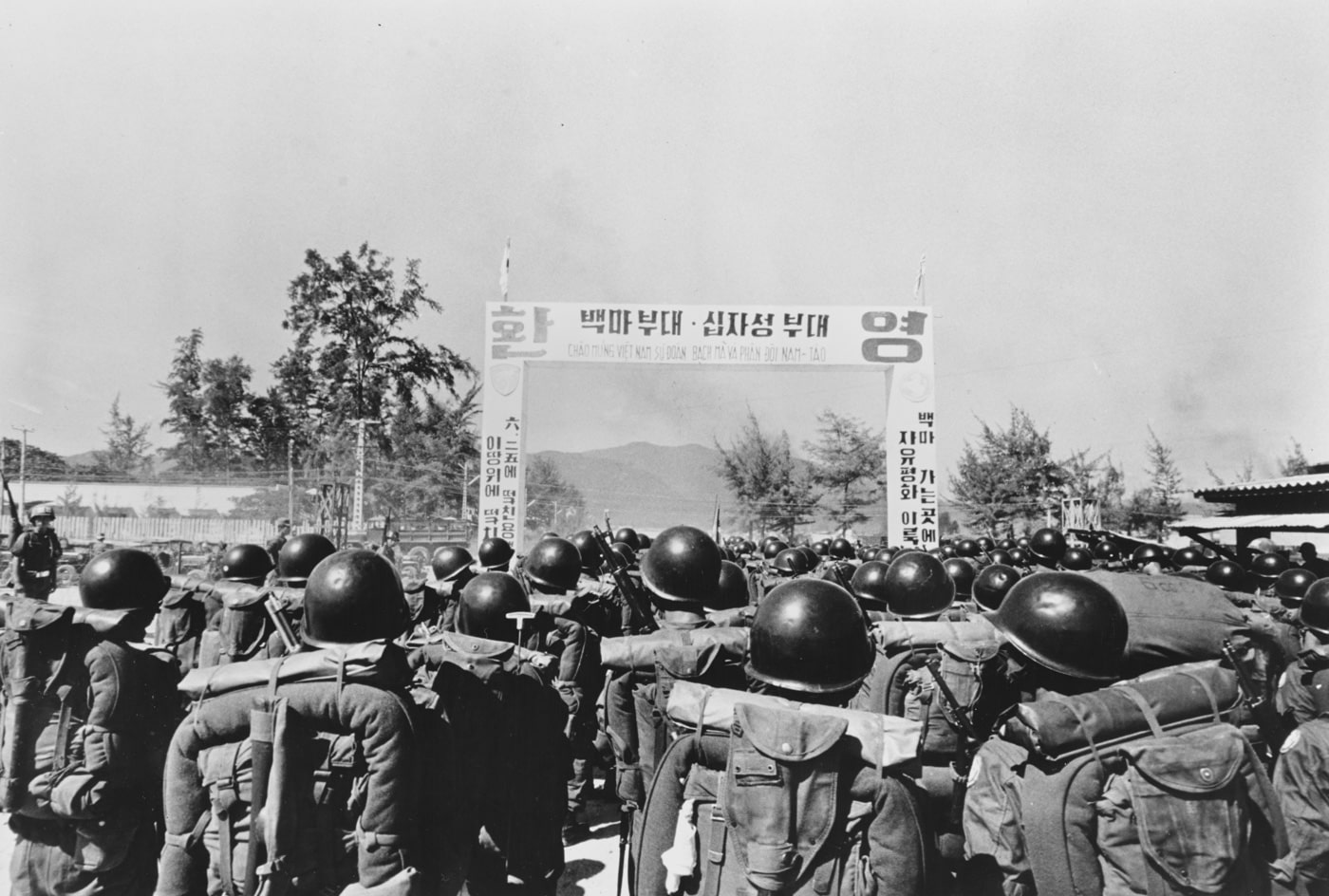
Troops of the Korean “White Horse” Division, 5,500 strong, march under a huge sign welcoming them to South Vietnam. Image: U.S. Navy
Seems a landing craft had run aground in the area.
When the rescue vessel arrived a couple of days later, the overloaded beer barge was mysteriously empty.
And there was a hell of a post-op party at the Korean base camp.
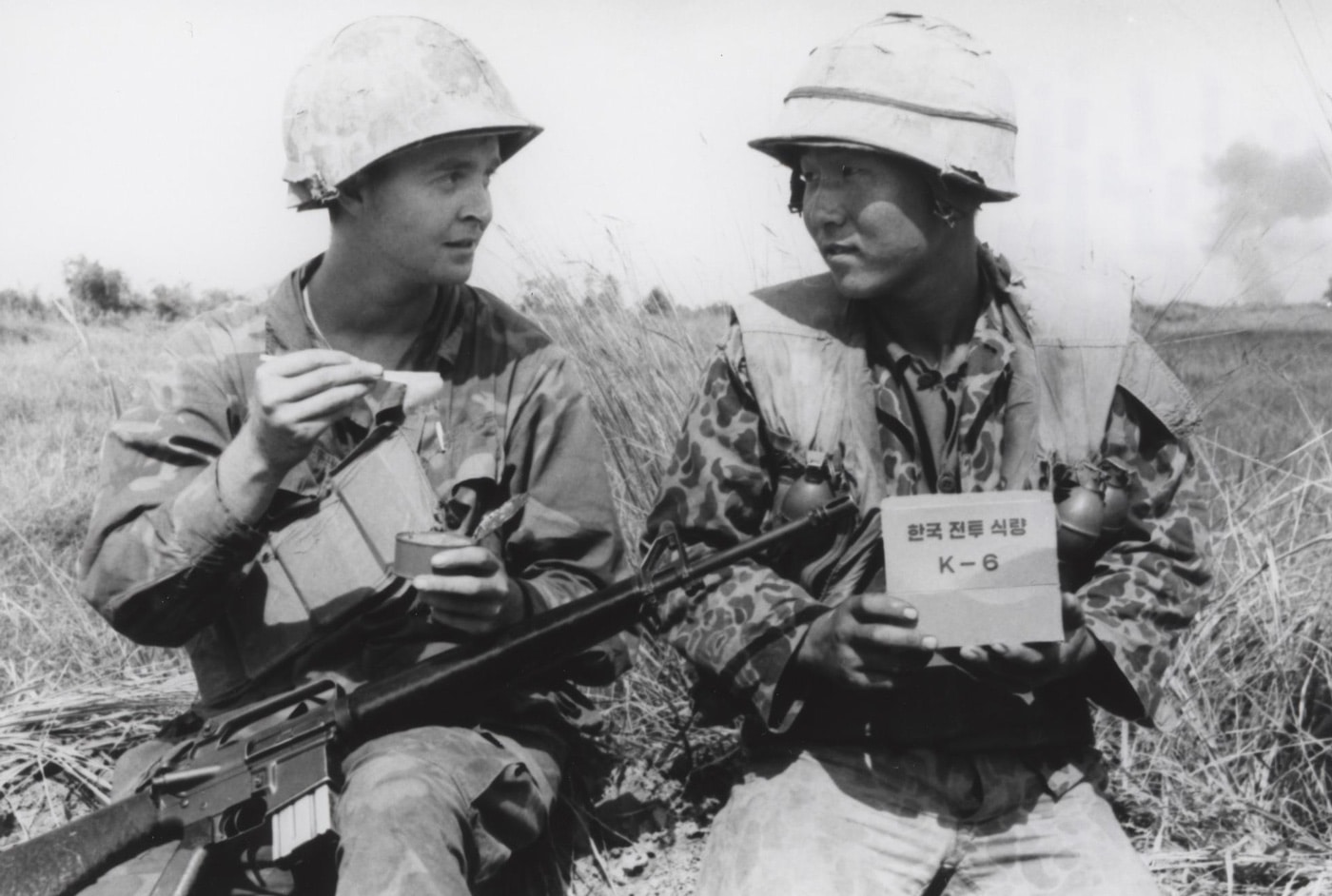
Pfc. Guy M. Wells gets a taste of Korean C-rations and instructions on using chop sticks from Kang Chang, a South Korean Marine, on Operation Meade River. Image: U.S.M.C.

A wounded ROK Marine is evacuated by amedevac helicopterof Marine Medium Helicopter Squadron 163. Image: Sgt. T. E. Kingry/U.S.M.C.
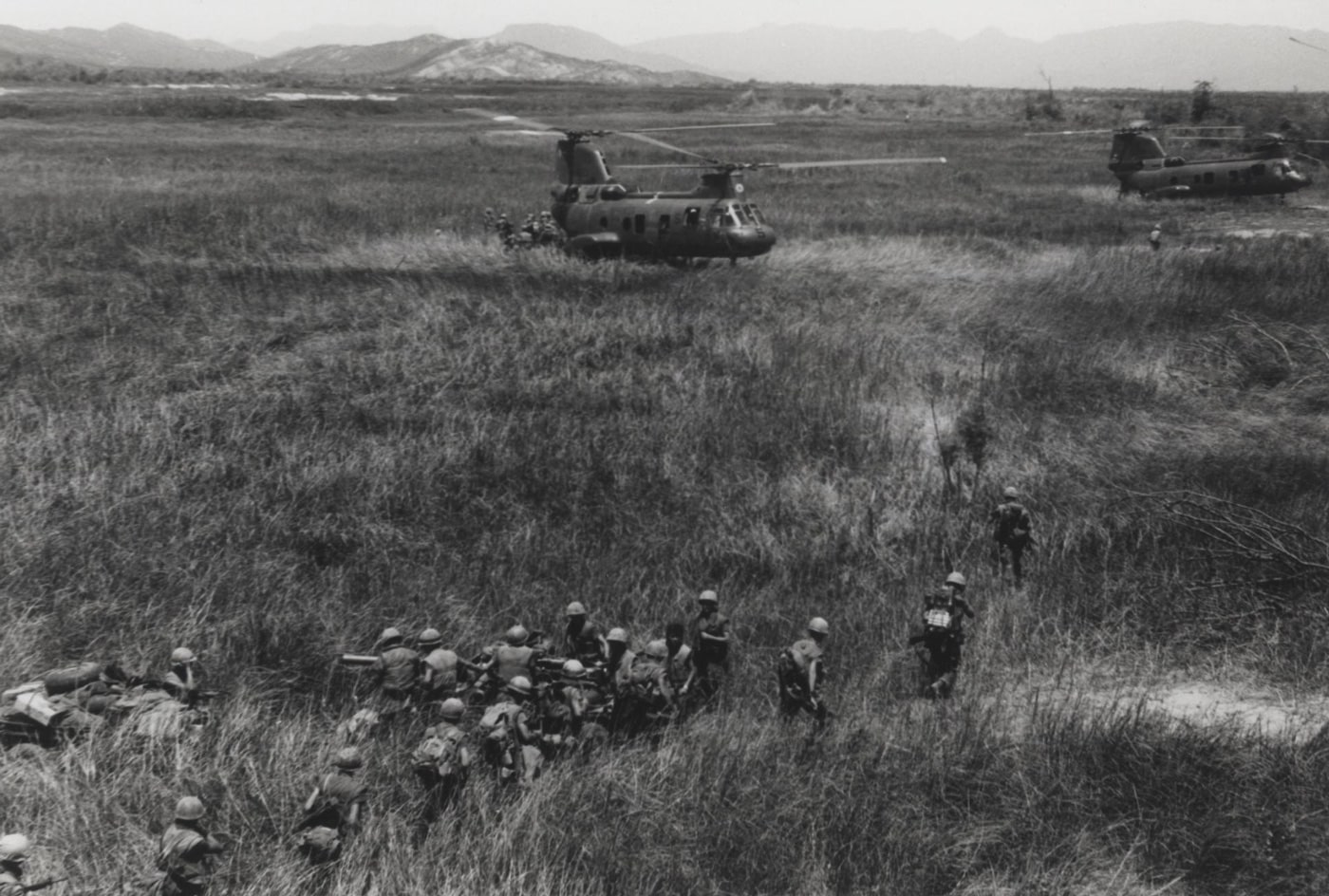
U.S. Marine Corps CH-46 Sea Knight helicopters rendezvous with elements of the South Korean 1st Marines in the ‘Dodge City’ area south of Da Nang. Image: Gunnery Sgt. Bob Jordan/U.S.M.C.




